You are using an out of date browser. It may not display this or other websites correctly.
You should upgrade or use an alternative browser.
You should upgrade or use an alternative browser.
I did this tonight, but not with all the salt. I put on about what I'd normally use and let it sit for about an hour. Then I added freshly ground pepper and off to the grill.
I liked it much better than with Montreal Steak Seasoning. You can actually taste the beef.


Now if I could just take better pics....
I liked it much better than with Montreal Steak Seasoning. You can actually taste the beef.


Now if I could just take better pics....
G
Guest
Guest
Originally posted by KenP:
I did this tonight, but not with all the salt. I put on about what I'd normally use and let it sit for about an hour. Then I added freshly ground pepper and off to the grill.
I liked it much better than with Montreal Steak Seasoning. You can actually taste the beef.


Now if I could just take better pics....
Some Great Pics Ken. Also Larry had some great pics. You really should try it with all the salt to see if you notice a difference. Since i didn't taste your steaks i don't know but i can gaurantee the steak with all the salt won't be to salty. Just make sure you rinse it off and don't put any more salt on it. I didn't put quite as much salt as Larry put on his...i put exactly how much the blog called for. Either way it looked like you had a great steak.
Thanks. I didn't have Kosher, just table and sea salt so I was afraid to try those in a heavy dose without some more info. (I'm pretty sure the sea would have been fine.)Originally posted by Brent W.:
Some Great Pics Ken. Also Larry had some great pics. You really should try it with all the salt to see if you notice a difference. Since i didn't taste your steaks i don't know but i can gaurantee the steak with all the salt won't be to salty. Just make sure you rinse it off and don't put any more salt on it. I didn't put quite as much salt as Larry put on his...i put exactly how much the blog called for. Either way it looked like you had a great steak.
I used Kevin's suggestion from the bottom of the first page and used a typical amount and didn't rinse. I doubt I'll ever use Montreal again. It was that good and beefy.
I've got 5 more 1.25+/-lb ribeye's and Porters to work on it!
Tonight I did ribeyes again. My wife likes hers sweet so I tried something I wasn't sure would work. I salted the steaks and then put a nice thin layer of brown sugar on it. My thinking that as the meat pulled the salt back in, it would also pull the sugar in.
Well, as you can imagine, the char marks were incredible, but I was worried about the taste. She went nuts over it! She said she could actually taste the salty, sugary goodness in every bite. It's now her favorite steak!
I didn't take any pics, but we also had baked potatoes and bacon wrapped corn. Man, I love corn that way.
Well, as you can imagine, the char marks were incredible, but I was worried about the taste. She went nuts over it! She said she could actually taste the salty, sugary goodness in every bite. It's now her favorite steak!
I didn't take any pics, but we also had baked potatoes and bacon wrapped corn. Man, I love corn that way.
G
Guest
Guest
I made it tonight again.......mmmmmmmmmmmmmmmmmmmmmmmmm
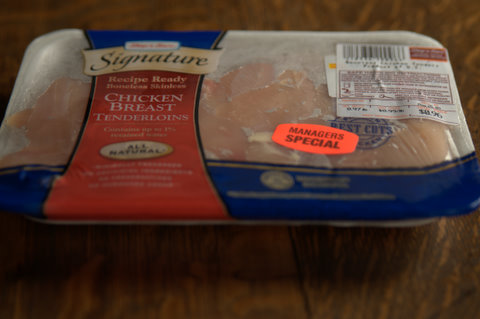
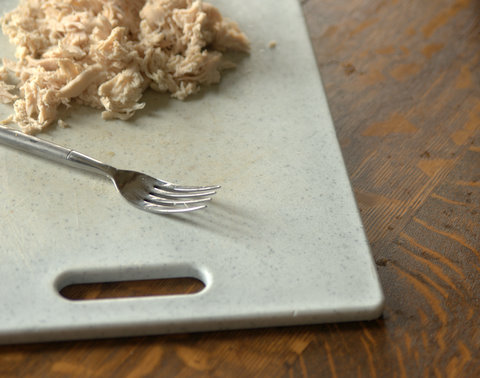
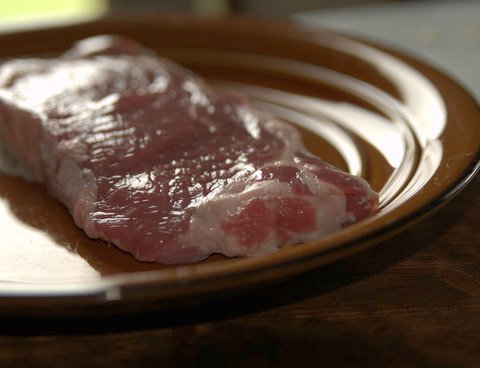
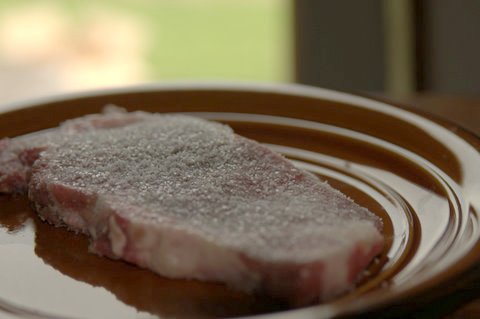
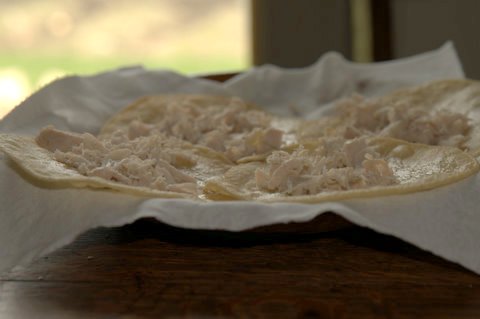

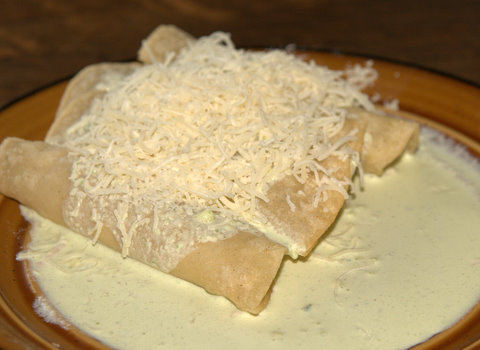
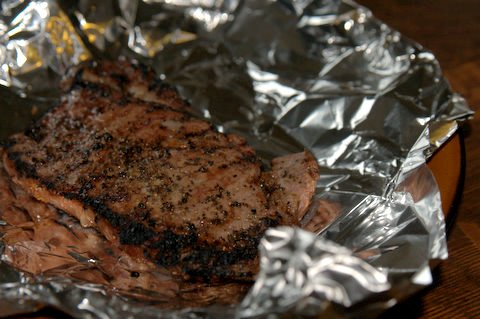
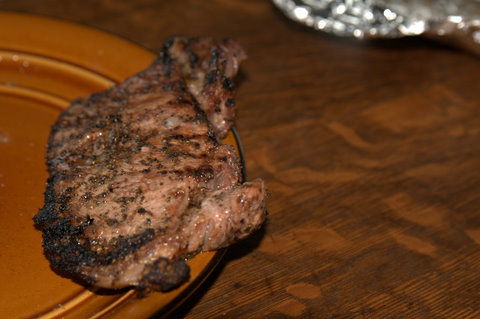
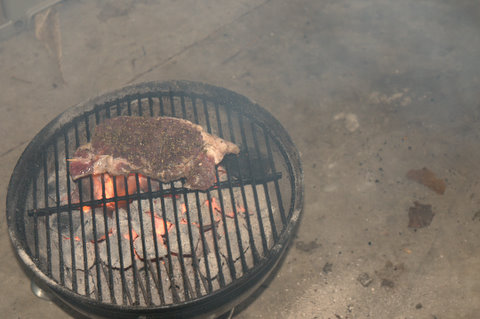
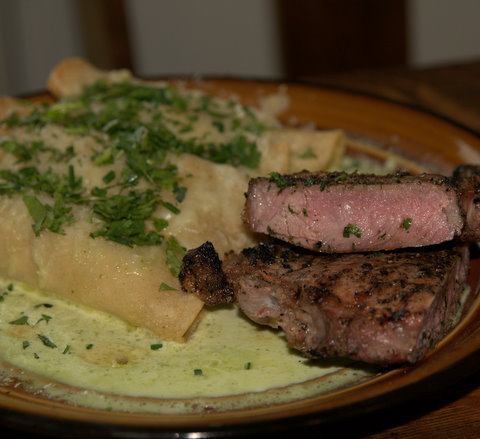
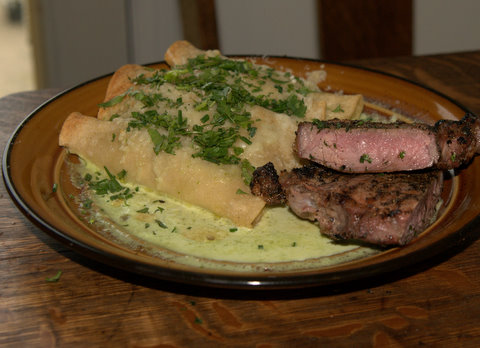












j biesinger
TVWBB Platinum Member
I thought I'd throw in my two cents:
I've occasionally pre-salted (similar to Kevin, never more than I needed) and haven't noted it having a major impact on the final product. I wasn't really looking for anything so I may have missed it. Additionally, I understand the science behind brining meats (and got a chuckle out of the funny pics that illustrated the recipe), but question whether its the key factor here.
To the point: what I find has the most affect on the final product is the time that the meat has had to warm before cooking. Kevin taught me that the meat contains natural enzymes that do not work at refrigerator temps. If the meat is allow time to come to room temp, these enzymes can get to work and tenderize the steak. I also find that I achieve a much more uniform doneness. Could this enzyme action and uniform doneness lead to a juicier, more tender steak?
I frequently do fillet and don't usually presalt, but always warm it to room temp. The warming usually depends on when I remember to pull them out, how crowded they are when warming, and whether they are resting on a metal pan or not. I find that some time the fillets come out better than others, and the best times always resulted from the fillets that had been warmed the longest.
I dont see anything wrong with the pre-salting and it certainly might be a key player in this protocol, however, don't overlook the warming aspect, because it might be the reason why this works.
btw- nice plate brent.
I've occasionally pre-salted (similar to Kevin, never more than I needed) and haven't noted it having a major impact on the final product. I wasn't really looking for anything so I may have missed it. Additionally, I understand the science behind brining meats (and got a chuckle out of the funny pics that illustrated the recipe), but question whether its the key factor here.
To the point: what I find has the most affect on the final product is the time that the meat has had to warm before cooking. Kevin taught me that the meat contains natural enzymes that do not work at refrigerator temps. If the meat is allow time to come to room temp, these enzymes can get to work and tenderize the steak. I also find that I achieve a much more uniform doneness. Could this enzyme action and uniform doneness lead to a juicier, more tender steak?
I frequently do fillet and don't usually presalt, but always warm it to room temp. The warming usually depends on when I remember to pull them out, how crowded they are when warming, and whether they are resting on a metal pan or not. I find that some time the fillets come out better than others, and the best times always resulted from the fillets that had been warmed the longest.
I dont see anything wrong with the pre-salting and it certainly might be a key player in this protocol, however, don't overlook the warming aspect, because it might be the reason why this works.
btw- nice plate brent.
K Kruger
TVWBB 1-Star Olympian
Yes, the warming element is operative. Enzymes in the meat becme more active as temperatures rise. These enzymes are directly responsible for a more-tender finish (they are the very same enzymes that cause increased tenderness when beef is dry- or wet-aged).
These enzymes become inoperative at temps of 105 (for one) and 120 (for the other). This is why steaks -- and mosts roasts, especially those that are on the tougher side to begin with -- should be allowed to warm at room temp for a while before cooking, and is why slow cooking for the less tender roasts (and even many of the other more tender roasts) with a sear-to-finish works so well -- because the enzymes in the meat are allowed to do their thing for longer. (Larry Wolfe knows this well -- something he has termed the 'reverse sear' -- and has achieved consistently excellent results.)
I would quite agree, j, that the effect of pre-salting is not major. But it does work (as one would expect of a dry brine) to flavor the interior of the meat in question. In terms of tenderness, no, I do not believe it to be a key factor; in terms of flavor I think it is worthwhile.
Much of what we perceive as 'tenderness' and 'flavor' is directly connected to what happens in our mouths when we chew. If we salivate more (caramelization and the right amount of salt will cause increased salivation) then we will perceive increased flavor and tenderness irrespective of the 'reality'. Salt inside the meat though (something that pre-salting can achieve) does do its part in moisture retention. And moisture retention does -- as you would guess -- increase salivation when chewing meat.
These enzymes become inoperative at temps of 105 (for one) and 120 (for the other). This is why steaks -- and mosts roasts, especially those that are on the tougher side to begin with -- should be allowed to warm at room temp for a while before cooking, and is why slow cooking for the less tender roasts (and even many of the other more tender roasts) with a sear-to-finish works so well -- because the enzymes in the meat are allowed to do their thing for longer. (Larry Wolfe knows this well -- something he has termed the 'reverse sear' -- and has achieved consistently excellent results.)
I would quite agree, j, that the effect of pre-salting is not major. But it does work (as one would expect of a dry brine) to flavor the interior of the meat in question. In terms of tenderness, no, I do not believe it to be a key factor; in terms of flavor I think it is worthwhile.
Much of what we perceive as 'tenderness' and 'flavor' is directly connected to what happens in our mouths when we chew. If we salivate more (caramelization and the right amount of salt will cause increased salivation) then we will perceive increased flavor and tenderness irrespective of the 'reality'. Salt inside the meat though (something that pre-salting can achieve) does do its part in moisture retention. And moisture retention does -- as you would guess -- increase salivation when chewing meat.
Clint
TVWBB Olympian
Originally posted by K Kruger:
>enzymes<
These enzymes become inoperative at temps of 105 (for one) and 120 (for the other). This is why steaks -- and mosts roasts, especially those that are on the tougher side to begin with -- should be allowed to warm at room temp for a while before cooking, and is why slow cooking for the less tender roasts (and even many of the other more tender roasts) with a sear-to-finish works so well -- because the enzymes in the meat are allowed to do their thing for longer. (Larry Wolfe knows this well -- something he has termed the 'reverse sear' -- and has achieved consistently excellent results.)
I would quite agree, j, that the effect of pre-salting is not major. But it does work (as one would expect of a dry brine) to flavor the interior of the meat in question. In terms of tenderness, no, I do not believe it to be a key factor; in terms of flavor I think it is worthwhile.
Much of what we perceive as 'tenderness' and 'flavor' is directly connected to what happens in our mouths when we chew. If we salivate more (caramelization and the right amount of salt will cause increased salivation) then we will perceive increased flavor and tenderness irrespective of the 'reality'. Salt inside the meat though (something that pre-salting can achieve) does do its part in moisture retention. And moisture retention does -- as you would guess -- increase salivation when chewing meat.
I don't always allow to warm more than 30 minutes, don't pour on a ton of salt, but I do notice that Porterhouses are usually quite a bit more tender than T-bones, Ribeyes, & NYs. Is there something about even a cheap porterhouse that makes it seem so much better to me?
K Kruger
TVWBB 1-Star Olympian
I don't know. A Porterhouse is the same as a T-bone, except that it has more of the tenderloin attached. And, of course, the tenderloin is, well, tender. And the other side of a Porterhouse is Strip, so I'm not really seeing the difference...
Regardless, try letting your steaks sit for longer -- say, 90 min to 2 hours -- before cooking and see what you think.
Regardless, try letting your steaks sit for longer -- say, 90 min to 2 hours -- before cooking and see what you think.
Yeah too longer. I took a Ribeye out of the fridge on Sat after work. Salted it and left it sit on the foam tray. Happened to nodd off for a bit and woke up 2 hrs later. Fired up the WSM and grilled it on the lower grate, no water pan. Man that sucker was tender. I don't over salt my steaks then rinse though. Just apply my normal amount of salt and place on the grill. There's something about the sitting out of the fridge for awhile thing.Originally posted by K Kruger:
Regardless, try letting your steaks sit for longer -- say, 90 min to 2 hours -- before cooking and see what you think.
A one inch chop, sitting for 2 hrs at room temp, no problems if cooked to safe internal temps in my book.Originally posted by Clint:
without someone like K around I wouldn't know it was safe. I will be sure to try it. Is it safe/recommended with pork too?
j biesinger
TVWBB Platinum Member
without someone like K around I wouldn't know it was safe. I will be sure to try it. Is it safe/recommended with pork too?
meat is sterile internally. its the surface that may be contaminated, but easily sterilized with a good searing.
burgers on the other hand are not sterile internally.
K Kruger
TVWBB 1-Star Olympian
I have food microbiologist and researcher contacts on a food safety board that would disagree with 'meat is sterile internally', but it is true that we don't usually think of the interior of intact meat cuts as potentially problematic (save for the vanishingly rare possibility of trich in commercial pork). Ground meat -- and turkey and chicken -- are not included in this, of course, but there is no reason why one can't allow a chicken or turkey an hour or two to warm (for more even cooking, not for enzymatic activity) -- I do it all the time -- if not burgers, which hold together better before cooking when cold.
Much, much less safe is allowing already cooked food to languish too long. Hot foods either need to be kept hot or chilled for storage in a relatively short period of time. (Home refrigerators are not designed to chill large masses of meat (or other hot, cooked foods) rapidly -- and, if placed in the fridge in such a state, can take a very long time to chill.)
Because I like smokerings I don't warm meats for Q-ing ahead of time (I Minion the start so the come-up will be slower) but I do allow an hour or two for nearly every other intact cut, be it a steak, chop or roast. Any increase in surface spoilage bacteria or pathogens (they are not the same thing) that occurs will be taken care of, along with whatever was there in the first place, during proper cooking.
Much, much less safe is allowing already cooked food to languish too long. Hot foods either need to be kept hot or chilled for storage in a relatively short period of time. (Home refrigerators are not designed to chill large masses of meat (or other hot, cooked foods) rapidly -- and, if placed in the fridge in such a state, can take a very long time to chill.)
Because I like smokerings I don't warm meats for Q-ing ahead of time (I Minion the start so the come-up will be slower) but I do allow an hour or two for nearly every other intact cut, be it a steak, chop or roast. Any increase in surface spoilage bacteria or pathogens (they are not the same thing) that occurs will be taken care of, along with whatever was there in the first place, during proper cooking.
dsitterson
TVWBB Super Fan
Tried it and it was a tad to salty but was juicy
Tony C.
TVWBB Wizard
wow.. i put the porterhouse on the counter for an hour. then i salted and onioned it for 45-50 minutes,rinsed,dried and peppered it.then i grilled it indirect on the OTG with regular K and a hickory chunk for 20 minutes. then i put a handfull of RO lump on the K and let it get good and hot for a sear to finish. i'm still working on the loin side, but it is very flavorful and tender as all get out.
